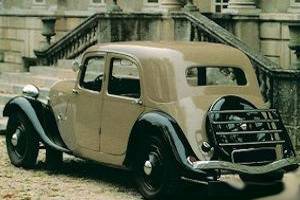Traction Avant is the French for “front-wheel drive,” one of the many innovations first introduced by Citroën on this charismatic and long-running car range. When first seen as the Citroën 7A in 1934, the four-door sedan was very modern.

Citroën Traction Avant 1934
- YEAR REVEALED 1934
- PLACE OF ORIGIN Paris, France
- HISTORICAL STATUS production car
- ENGINE four-cylinder, 80ci (1,303cc)
- MAXIMUM POWER 32bhp
- LAYOUT front-mounted engine driving the front wheels
- BODYWORK four-door five-seater sedan
- TOP SPEED 59mph (95kph)
- NUMBER BUILT 88,066 (7 versions only-759,123 Traction Avants in total)
Its low-slung appearance came from having the entire drivetrain mounted ahead of the cabin. Engine power was through a three-speed manual gearbox in front of the engine with driveshafts to the front wheels. The construction of the car also broke new ground, being a welded monocoque sedan that did away with a separate chassis frame altogether. Combined with the front-drive and torsion bar front suspension, the car had fantastic roadholding for its time, but was hard work to steer.
The 7A was rather underpowered with its 80ci (1,303cc) engine. Later in 1934, it was joined by the 11 Legere with a 117ci (1,911cc) motor (Light 15 in the UK, denoting the two countries’ different taxation ratings for engine power). This became the signature model, although there was also a “15” six-cylinder version, and a wide choice of bodies, including sedans with a choice of two wheelbases, convertibles, and station wagons.
The Traction Avant became synonymous with egalitarian Parisian style. Yet, although there were few teething troubles, the huge investment needed to put them on sale brought Citroën to bankruptcy. The stress is said to have killed company founder André Citroën, although his company was rescued by tiremaker Michelin, a major creditor.